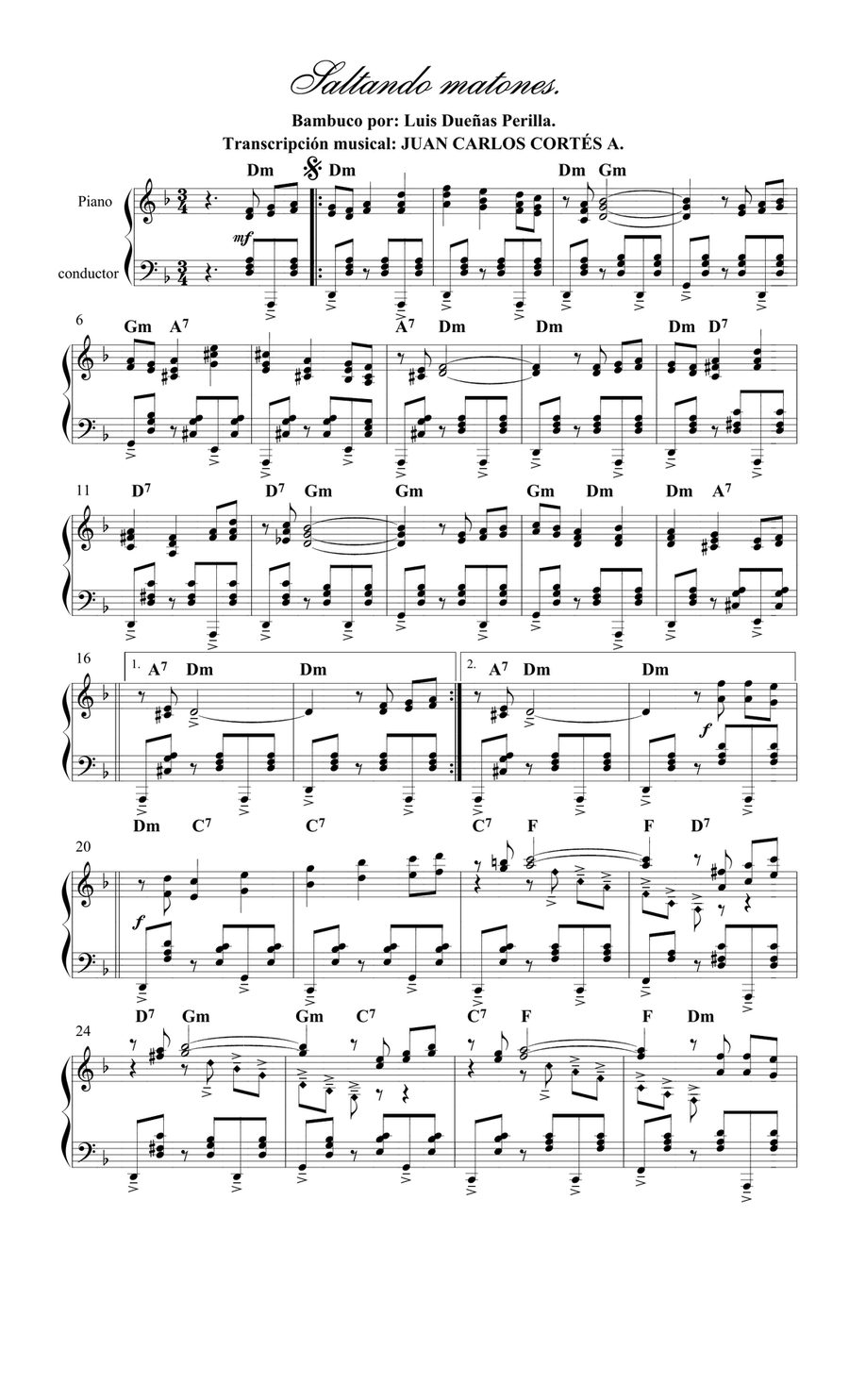Piano Solo - Digital Download SKU: A0.958721 Composed by Luis Dueñas Perilla. Arranged by Juan Carlos Cortés A. 20th Century,Concert,Standards,Traditional,World. Score. 2 pages. Juan Carlos Cortés Aguirre #6115835. Published by Juan Carlos Cortés Aguirre (A0.958721). Transcripción para Piano Solo por:JUAN CARLOS CORTÃS A.Luis Dueñas Perilla nace en Somondoco (Boyacá) el 1 de Febrero de 1921 y muere en Bogotá el 3 de Noviembre de 1977. Autor y compositor de la célebre danza Negrita.Este bambuco es tema de discusión por algunos estudiosos e investigadores musicales, los cuales suponen que este bambuco es original del maestro antioqueño Carlos Vieco OrtÃz por su estilo y forma melódica y armónica. Púes en algún momento tuvo un encuentro con este buen cantante, al cual le confió uno de sus cuadernos con sus obras para estudiarlas, y luego fue devuelto lamentablemente con algunas páginas arrancadas de dicho libro; a lo cual el maestro Vieco no mostró disgusto, ni hizo reclamo, dada su pacÃfica actitud y tranquilo temperamento.Algunos se basan en un sugestivo tÃtulo del pasillo de Carlos Vieco llamado: Saltando PolÃnes. A lo que el investigador Javier Gutiérrez Villegas afirma que:...No todas las canciones de Vieco tuvieron ese origen trascendente ni fueron estrenadas con solemnidad. Y dejando a un lado la actitud circunspecta, nos relata el nacimiento del pasillo Saltando polines: en 1932, plena guerra con el Perú, se juntaron en La Bastilla Alberto Ãngel Vallejo el aplaudido barÃtono, Roberto Muñoz Londoño, educador y poeta, y él. Se encontraban en ruinosa situación y planearon una gira que los sacarÃa de afanes. Imaginábamos montañas de plata, apunta don Carlos, con la voz maravillosa de Alberto, con las declamaciones de Muñoz Londoño y con mis interpretaciones al piano. Escogimos a Cisneros para comenzar. En pleno auge el Ferrocarril de Antioquia, aquella población era centro populoso y muy importante. Pues a la primera función asistieron el cura y el alcalde ya la segunda no fue nadie. Con los gastos de transporte, de hotel, de cartelerÃa, nos quedamos en la pura inopia. Con unas monedas sobrantes compramos pasaje de tercera para Muñoz Londoño que se encontraba enfermo y Ãngel Vallejo y yo resolvimos regresar a MedellÃn, saltando polines. Iniciamos la aventura y cuando llevábamos buen trecho apareció una máquina del Ferrocarril que transportaba veteranos para la guerra y nos recogieron. Y en esta forma, hacinados pero felices, pusimos fin a la correrÃa. (Sic erat scriptum: «asà fue escrito».).Polines: Traviesas de madera o durmientes de madera son un tipo de traviesas utilizadas en la construcción de vÃas férreas.Polémica o no, este Bambuco está registrado legalmente por Luis Dueñas Perilla, compositor boyacense.Gabriel Uribe y el Conjunto de Tomás Burbano. Video You Tube:https://www.youtube.com/watch?v=QxQr3cMmskg
